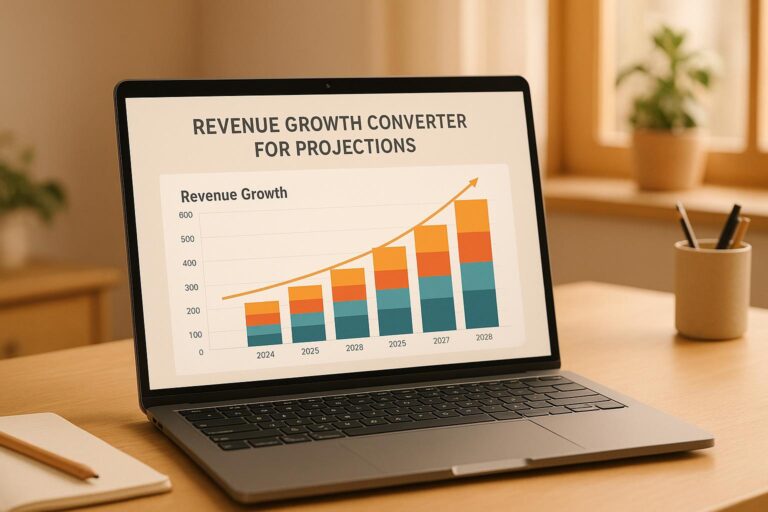In our fast-moving online world, every second matters. Increasing website speed is key for online success today. Automated speed optimization tools are changing the game for businesses and web developers. They make websites load faster, improving user experience, search rankings, and business growth.
Ignoring website speed is something successful brands cannot do. It affects how long visitors stay, how often they buy, and how visible your site is online. Today, using automated tools to speed up your site is essential, not just nice to have. This technology makes websites work better, leading to more people visiting and buying.
A detailed guide on advanced strategies for site speed enhancement can help. It’s perfect for those looking to upgrade their site’s speed and reliability.
Key Takeaways
- Automated tools are crucial for sustaining high website performance.
- Site speed optimization is directly linked to improved search rankings and user experience.
- Continuous enhancement of website speed is vital for engaging and retaining customers.
- Choosing the right automation solutions can lead to significant gains in traffic and conversions.
- An effective automation strategy must be matched with ongoing analysis and adjustments.
Understanding Website Loading Speed
Today, a website’s speed is super important. Working to speed up website loading boosts user happiness and rankings in SEO. It also leads to more people buying things.
What Constitutes Loading Speed?
Loading speed is how long a webpage takes to show all its stuff. Server response times and how resources load affect it a lot. Focusing on website speed optimization matters because it affects if visitors are happy or annoyed.
Importance of Fast Loading Times
Speed really matters. For example, 40% of folks leave a site if it’s slow, taking over 3 seconds to load. Even a one-second delay drops satisfaction by 16%. Plus, 70% of users say that page speed influences their shopping choices.
For online stores, speed is super important. A survey shows 79% of people don’t return to slow sites. This means making your site fast isn’t just nice to have, it’s essential for online business.
This table shows how loading times affect different industries. It shows why speeding up is critical:
| Industry | Average Load Time (Seconds) | Impact on User Engagement |
|---|---|---|
| Automotive Retail | 6 | Leads to decreased session length |
| Consumer Packaged Goods | 6.1 | Up to 50% potential loss in conversions |
| Financial | 5.1 | 21% increase in bounce rate per extra second |
| Healthcare | 5.6 | Longer times may risk client data security |
| Media | 5.5 | Reduced ad revenue and visitor engagement |
| Retail | 6 | High abandonment rates affecting revenue |
| Technology | 6.8 | Drives away tech-savvy users expecting quick interactions |
| Travel | 6.7 | Booking abandonments increase significantly |
In conclusion, making websites load faster is key. It should be a major part of any digital plan. This is because it hugely impacts both user experience and sales.
Key Factors Affecting Loading Speed
To improve website performance, knowing what affects loading speed is vital. Tackling these can boost user experience and your site’s function. Let’s look at key factors like server response times, optimizing images, and browser caching. Discover how automated website speed enhancement makes a big difference in handling these areas.
Server Response Time
Server response time is crucial. It’s about how fast the server sends data to the browser. Web hosting, server location, and resources are big factors. Slow server times can delay content loading, hurting performance. Using website speed automation techniques to keep server settings optimized can cut these delays.
Image Optimization Techniques
Big, uncompressed images slow down websites. The right optimization adjusts size, compresses files, and uses the best formats without losing quality. Automation tools make sure images are optimized right when uploaded. This helps to improve website performance a lot.
Utilization of Browser Caching
Browser caching saves your site’s elements in a user’s browser after their first visit. This makes fewer data load on later visits. Automating caching policies means only necessary files get redownloaded. This boosts loading times for return visitors and is key for automated website speed enhancement.

Using these strategies not only speeds up your website. It also makes the user experience better, leading to more engagement and better conversion rates. Studies back this. Website speed automation techniques bridge the front and back end, ensuring a smooth online presence.
Introduction to Automation Tools
Today’s world moves fast, especially online. That’s why automated speed optimization is key for tech-focused companies. Automation tools are a must for developers who want to enhance website loading speed through automation. They provide a range of powerful tools. These tools greatly improve a website’s performance and efficiency.
Types of Automation Tools Available
Automation tools range from full monitoring systems to specialized optimization utilities. Platforms like Sematext give detailed insights on load times and user interactions. In contrast, tools like Gulp automate mundane development tasks. For instance, tasks like minification and linting, key for website speed automation techniques.
Important tools like Selenium automate browser actions for testing. Katalon Studio provides solid testing for web apps, APIs, and mobile apps. New tools like Cypress and Playwright are making a mark by improving automation for modern development settings. Each tool helps cut down manual testing. This speeds up development and makes applications better.
Benefits of Using Automation for Speed
Automation makes web development smoother and improves performance. Using automated speed optimization techniques ensures tasks run well. It cuts human error and saves time and money. Automation does repetitive tests and tasks accurately. This eliminates delays from manual work, creating a faster development process.
Plus, automation helps catch and fix bugs early. This reduces downtime and betters user experience. By automating, websites load faster. This is crucial for staying ahead of competitors and climbing search engine ranks.
| Automation Tool | Primary Function | Key Benefit |
|---|---|---|
| Selenium | Multi-browser testing | Comprehensive compatibility testing |
| Gulp | Task running (e.g., minifying code, adding CSS prefixes) | Speeds up development processes |
| Katalon Studio | Integrated testing for web, mobile, API | Consolidates testing platforms for efficiency |
| Sematext | Performance monitoring | Insightful analytics for optimized load times |
Automation is not just for speed but also for quality. It meets the fast demands of today’s internet users. Automation tools help developers and companies stay flexible. They can adapt to changing needs quickly.
Implementing Automation for Speed Improvement
In today’s digital world, speed is everything. The ability to enhance website loading speed through automation
Choosing the Right Tools for Your Website
Choosing the best automation tools is key for better loading times. With so many options available, finding ones that fit your content type, traffic, and tech setup is critical. Google’s Lighthouse and PageSpeed Insights are great for performance tips and website speed optimization advice.
Integrating Automation into Your Workflow
Adding these tools into your process should be planned carefully. Setting clear performance targets is the first step. Then, setting up these tools properly is crucial for good results. For the best speed, keep updating and adjusting settings based on the data you get. This makes your website faster consistently, thanks to automation.
| Tool | Function | Speed Impact |
|---|---|---|
| Lighthouse | Performance Optimization | High |
| PageSpeed Insights | Load Time Analysis | High |
| WebPageTest | Advanced Speed Testing | Medium |
| GTmetrix | Performance Scoring | Medium |
| Pingdom | Website Speed Test | Medium |
The goal is simple: enhance website loading speed through automation. This isn’t just for now, but for always. It shows a commitment to the best user experience and boosting your site’s visibility.
Monitoring and Analyzing Loading Speed
In the online world, keeping an eye on your website’s speed is key. By using strong tools and strategies, businesses can use data to make their websites faster. This helps in making websites run smoother and quicker.
Tools for Tracking Website Performance
Many advanced tools help us understand website performance. Tools like GTMetrix, Google PageSpeed Insights, and WebPageTest provide deep insights. They show how different factors affect loading time. For example, GTMetrix blends data from Google’s PageSpeed and Yahoo’s YSlow to show overall performance. Meanwhile, Google PageSpeed Insights offers specific tips for improving both mobile and desktop sites.
Adjusting Automation Based on Analysis
Information from these tools helps website managers fine-tune speed boosting techniques. If specific metrics like Time to First Byte (TTFB) or Largest Contentful Paint (LCP) are low, changes can be made. Adjustments may include preloading key resources, compressing images, or delaying some JavaScript. Each change aims to improve loading times for a smoother website experience.
| Performance Metric | Good Threshold | Poor Threshold |
|---|---|---|
| Time to First Byte (TTFB) | Under 0.8 seconds | Above 1.8 seconds |
| Largest Contentful Paint (LCP) | Under 2.5 seconds | Above 4 seconds |
| Total Blocking Time (TBT) | Under 300 milliseconds | Above 600 milliseconds |
| Cumulative Layout Shift (CLS) | Under 0.1 | Above 0.25 |
Regular checks and analysis not only pinpoint where to improve right away but also foresee future problems. Staying ahead in refining website speed is crucial for keeping users happy and boosting site performance.
Future Trends in Speed Optimization Automation
The journey towards faster websites is now heading towards automation. We are entering a time where smart solutions rule. This includes using AI and predictive analytics to make websites perform better. It’s not just a fancy thought now; it’s becoming real.
After the global pandemic, everyone expects websites to work faster. A speedy site keeps people interested. When a site loads slowly, from 1 to 3 seconds, it might lose visitors by 32%. Fast websites are also better for business and rank higher on Google. And with 5G technology, being fast is more critical than ever.
The Role of Artificial Intelligence
AI changes the game in making websites faster. It improves speed by learning from data and making smart adjustments. Even though only 35% of businesses use AI now, it’s a growing trend. AI can predict and fix issues before they bother people visiting the site. This is vital since over 63% of web traffic comes from mobile phones. Perfect mobile performance is a must.
Predictive Analysis for Continuous Improvement
Predictive analysis is a big deal in keeping sites speedy. It uses past data to guess future needs. This helps website managers prepare for what’s coming. Websites are complex with lots of scripts and high-quality content. Predictive analysis helps stay one step ahead.
This approach works well when you think about how web images and mobile data use are growing. With CDNs handling 70% of internet traffic, predictive analysis helps websites lead, not just follow.
FAQ
What specifically refers to ‘boosting website loading speed through automation’?
‘Boosting website loading speed through automation’ means using tech to make websites load faster. Tools and software automatically improve how web pages are delivered to browsers.
Why is it important to ‘increase website speed’?
A faster website makes for a better user experience and leads to more sales. It also lowers the chance visitors will leave and helps with search engine rankings. In short, speed keeps users happy and boosts your online presence.
What kind of tools are involved in ‘automated speed optimization’?
There are tools like image compressors, caching plugins, and content delivery networks. They work together to make websites faster and identify issues that slow them down.
What is meant by ‘loading speed’ in the context of websites?
Loading speed is how long it takes for a website to fully appear and be usable. It’s important for keeping users happy and making sure the website works well.
How does ‘fast loading times’ benefit a website?
Websites that load quickly lead to happier visitors who are more likely to stay and explore. This not only helps with search engine ranks but also increases the likelihood of turning visitors into customers.
Can you explain ‘server response time’ and its impact on website load speed?
Server response time is how quickly a server answers a browser’s request. Fast responses mean quicker loading times, making for a smoother visit to a site.
Why are ‘image optimization techniques’ critical for website loading speed?
Optimizing images is key because they can take a long time to load. By reducing their size without losing quality, web pages load faster.
How does ‘utilization of browser caching’ improve website performance?
Browser caching saves parts of a site on a visitor’s device for faster loading in the future. It speeds up the experience for returning users.
What are the different ‘types of automation tools available’ for website speed optimization?
There are all kinds of automation tools, like those for squeezing image sizes and managing how web content is loaded. They help websites run more smoothly and quickly on their own.
What are the ‘benefits of using automation for speed’?
Automation saves time and ensures your site stays fast without constant manual checks. It can handle a lot of work and grow with your site.
How do you go about ‘choosing the right tools for your website’ in automated optimization?
First, figure out what your website needs based on its content and audience. Then pick the tools that can best meet those needs and challenges.
What is involved in ‘integrating automation into your workflow’?
To integrate automation, you need to set goals, tune the tools to meet them, and make them a part of your regular site upkeep. This includes ongoing checks and updates.
What metrics do ‘tools for tracking website performance’ analyze?
Performance tools look at things like how long a page takes to load, size, and server speed. They help find and fix slowdowns.
How should you go about ‘adjusting automation based on analysis’?
Use the data from your tools to spot trends or problems. Then tweak your automation settings to keep your site running smoothly and quickly.
How is ‘Artificial Intelligence’ shaping the future of speed optimization automation?
AI helps by making smart, real-time adjustments based on lots of data. It predicts user actions and keeps improving loading times on its own.
How does ‘predictive analysis for continuous improvement’ optimize website performance?
Predictive analysis uses past data to guess future site traffic and actions. This lets you adjust early to keep your site fast for upcoming trends or spikes.



